Bad raw material, difficult solution
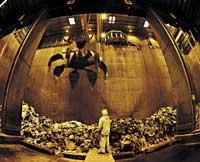
The first thing you can do is generate less trash. Specifically, the European Union has included in its regulations a list of priorities in the different waste treatment options, in which the reduction of the amount of garbage is indicated first. Reuse, recycling, composting, incineration for energy use and, finally, the landfill deposit of what is not useful.
The commitment to incinerators is focused on energy recovery, where efforts are concentrated and much less money is allocated to make the above measures effective.
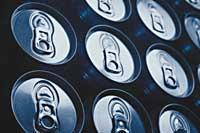
However, concrete and effective measures can be taken to reduce waste generation, reuse discarded material and recycle it to the fullest. The result is not only beneficial for the environment, but also for economic and social benefits. For example, in Belgium, products with more packaging than necessary are fined. In Germany, properly collected products carry a green dot that allows consumers to choose responsibly.
Alfonso del Val has been directing the waste plans of Navarra, Granada and La Palma, among others. According to him, the Navarrese program was ahead of existing regulations and actions in Europe and the United States for selective collection and recycling (1993-96). For example, in the Montejurra community they have managed to recycle more than 60% of the total waste generated.
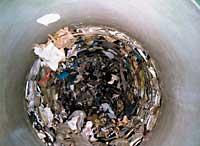
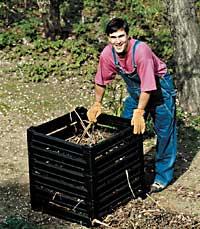
As for the recovery and reuse, in Navarre they collaborate with Traperos de Emmaus and the groups that have been working on it ever since. The integration of these groups into the system is very effective and ‘economic’. According to Alfonso del Val, the 150 Roma families operating in a single marginal neighborhood of Madrid in scrap collection accumulate more metal scrap than all recovery plants in Madrid. It should be noted that Spain imports annually 4 million tons of ferrous scrap and recovers only one and a half million tons.
Fertilizer waste
One of the usable parts of waste is organic matter. Fermentable organic materials abound in urban garbage: remains of food from homes, restaurants and food industries, remains of slaughterhouses and butchers, parks and gardens and purification sludge. Finally, half of the waste is organic matter.
Compostable with fermentable organic matter. Compost is obtained by the controlled degradation of this organic matter, which in addition to being useful for soil fertilization, has other advantages: contamination by uncontrolled degradation of waste is avoided, the volume of waste to landfill or treatment is considerably reduced...
Normally, the compost that is obtained is of little quality, since it has mixed other materials. In addition, the old facilities are inefficient. Only half of the 50 composting plants in Spain remain. In Europe composting has also suffered a strong setback and now only 3% of urban waste is composted.
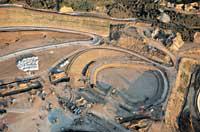
However, the correct separation of organic matter and the control of the process allow obtaining a good quality compost that enriches the burnt agricultural, garden and forest soils. In Navarra, compost and mud are used in organic agriculture, obtaining in three years a recycling of 40 thousand tons of organic matter. In any case, lower quality compost can be used both in public works and in the restoration of quarries and degraded areas.
Recovering energy from waste
Another way to take advantage of organic matter is the generation of biogas. Bacteria that degrade matter during composting are aerobic, that is, they need oxygen to live. Biogas is obtained through an oxygen-free medium, in which anaerobic bacteria degrade organic matter and the result is methane and carbon dioxide.
In landfills, anaerobic fermentation occurs spontaneously and the gases generated must be controlled, especially methane, which is explosive in concentrations between 5-10%.
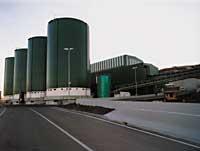
In biogas plants everything is done under control and gases are used to produce electric energy: 620 liters of biogas needed to produce approximately 1 kW h of electric power.
An example is the A Coruña plant. It receives 500 tons of waste daily, many of which transforms into electricity. The electricity generated is sufficient to meet the needs of the installation itself and to illuminate the streets of the city. In addition, once the anaerobic fermentation of organic matter is finished and when no more gas is produced, the remaining remains are used to make compost.
Burn waste for energy
Another way to recover the energy contained in the waste is by burning the waste, and there are several possibilities to do so. The most common are incinerators, but technologies based on gasification and pyrolysis are also being researched and improved.
According to engineer Mikel Alberdi of environmental consulting firm ADE Biotec, gasification has numerous advantages over incineration. Similar temperatures are used in gasification and traditional combustion, but less air is used in gasification. This reduces the generation of gases and toxic compounds and also uses the gas produced, so practically nothing is emitted into the atmosphere. On the other hand, in the slags and ashes that remain in the incinerators there are contaminants, while the remains that remain in the gasification are totally inerted crystals.
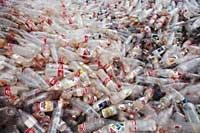
However, gasification is not yet fully developed. One of the drawbacks is that the waste must be homogeneous, since the temperature must be the same. But in that they have advanced a lot lately, and that problem is already overcome. The technology is becoming more and more advanced as the installation of an incinerator plant in Germany had recently been planned and a gasification plant was finally installed.
The same goes for pyrolysis. Pyrolysis works without oxygen and uses lower temperatures than incineration. This reduces gas generation and the final product is an oily liquid that can be used as fuel. This liquid, however, cannot be used directly, is very complex and must be treated. This is a big disadvantage as it makes this option much more expensive. However, some steps can be taken: In Japan, plastic pyrolysis is performed and the institutions give money to refineries to receive the final liquid.
However, for many, neither gasification nor pyrolysis are alternatives to incinerators. They are based on different technologies, but all of them require a continuous supply of fuel for their operation. That is, they need garbage and the higher their calorific power the better. This makes it difficult to reduce, reuse and recycle urban waste.
Full dumps
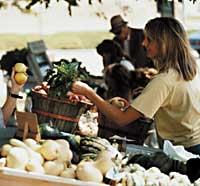
If burning trash is not an alternative, much less accumulation in landfills. However, the current controlled landfills are little like the old landfills, and thanks to them they were a source of serious health and environmental problems. However, it is not possible to continue accumulating all the waste generated in landfills, since there is not enough space. The European Union also makes this clear: only waste that cannot be recovered, recycled or energy valued will be collected in landfills.
Therefore, the criterion regarding landfills is clear, as they must go from being the almost unique and most widespread waste treatment system to being the last option. They should also be specially designed and managed to minimize environmental impact.
As for garbage, the only thing that is clear is that the solution is not easy. There is no single solution, surely you will have to take advantage of all or most of the existing alternatives, always measuring well the damages and benefits, and without forgetting what is the garbage that generates the least problems: the one that is not generated.
Almost everything that is thrown away can be separated and recycled
According to the Basque Government, the list of recyclable materials is as follows:
- Organic matter Paper and cardboard Plastic containers, cans and briks Glass containers Batteries Household waste Accumulators and batteries Car oil Used vegetable oils Electrical and electronic waste Large appliances Textile waste Medicines Discharge lamps (fluorescent, halogen...) Tires X-rays Household toxic waste
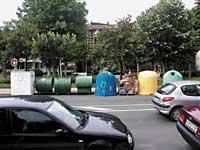
A couple of reviews
“The incinerator seems to me today a reasonable solution for Gipuzkoa”
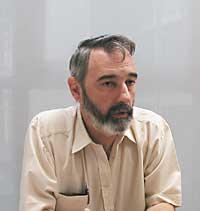
“Incineration has its cons, but it is the most developed and profitable option of existing ones.
For example, composting with organic matter presents marketing difficulties and, in addition, dioxins and other toxic compounds contained in garbage do not disappear. Another option is methanization, biogas generation. But that also has problems, the facilities are ugly, smelly and methane swells easily.
On the other hand, gasification and pyrolysis can be suitable solutions in the future. But keep in mind that its effectiveness depends on raw materials and that waste is low quality raw material.”
“The Gipuzkoa waste plan has been developed to justify incineration”
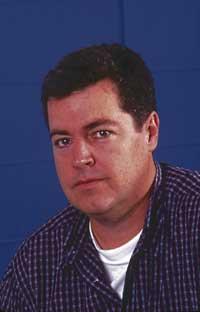
“Incinerators are waste burning machines they need to make them profitable. Therefore, betting on the incinerator is to fight against measures of reduction, reuse and recycling of waste.
Economically, almost any other means are cheaper than incineration. And the incinerators demand a huge investment, but of course, the business is also of this measure. Building construction, garbage trading and energy sales are for some a huge business. The incinerator will mortgage Gipuzkoa waste management for the next 25 years.”
Buletina
Bidali zure helbide elektronikoa eta jaso asteroko buletina zure sarrera-ontzian











